Portal:Solar System/Selected article
Usage
- Add a new Selected article to the next available subpage using "Create..." link below.
- Update
|max=to new total for its {{Random portal component}} on the main page.
Selected articles list
Portal:Solar System/Selected article/1
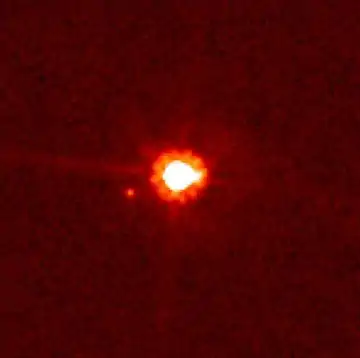
Eris has one large known moon, Dysnomia. In February 2016, Eris's distance from the Sun was 96.3 AU (14.41 billion km; 8.95 billion mi), more than three times that of Neptune or Pluto. With the exception of long-period comets, Eris and Dysnomia were the most distant known natural objects in the Solar System until the discovery of 2018 AG37 and 2018 VG18 in 2018. (Full article...)
Portal:Solar System/Selected article/2

The Sun moves around the Galactic Center of the Milky Way, at a distance of 26,660 light-years. From Earth it is on average 1 AU (1.496×108 km) or about 8 light-minutes far away. Its diameter is about 1,391,400 km (864,600 mi; 4.64 ls), 109 times that of Earth or 4 lunar distances. Its mass is about 330,000 times that of Earth, making up about 99.86% of the total mass of the Solar System. Roughly three-quarters of the Sun's mass consists of hydrogen (~73%); the rest is mostly helium (~25%), with much smaller quantities of heavier elements, including oxygen, carbon, neon, and iron. (Full article...)
Portal:Solar System/Selected article/3

According to current models, Mercury may have a solid silicate crust and mantle overlying a solid outer core, a deeper liquid core layer, and a solid inner core. Having almost no atmosphere to retain heat, Mercury has surface temperatures that change wildly during the day, ranging from 100 K (−173 °C; −280 °F) at night to 700 K (427 °C; 800 °F) during sunlight across the equator regions. At Mercury's poles there are large reservoirs of water ices that are never exposed to direct sunlight, which has an estimated mass of about 0.025–0.25% the Antarctic ice sheet. There are many competing hypotheses about Mercury's origins and development, some of which incorporate collision with planetesimal and rock vaporization.
Because Mercury is very close to the Sun, the intensity of sunlight on its surface is between 4.59 and 10.61 times the Sun's typical energy received by the Earth: the solar constant. Mercury orbits the Sun in a 3:2 spin–orbit resonance, meaning that relative to the background stars, it rotates on its axis exactly three times for every two revolutions it makes around the Sun. Counterintuitively, due to Mercury's slow rotation, an observer on the planet would see only one Mercurian solar day (176 Earth days) every two Mercurian solar years (88 Earth days each). Mercury's axis has the smallest tilt of any of the Solar System's planets, about 1⁄30 of a degree, and its orbital eccentricity is the largest of all known planets in the Solar System. (Full article...)
Portal:Solar System/Selected article/4

Venus has a weak induced magnetosphere and an especially thick carbon dioxide atmosphere, which creates, together with its global sulfuric acid cloud cover, an extreme greenhouse effect. This results at the surface in a mean temperature of 737 K (464 °C; 867 °F) and a crushing pressure of 92 times that of Earth's at sea level, turning the air into a supercritical fluid, while at cloudy altitudes of 50 km (30 mi) above the surface, the pressure, temperature and also radiation are very much like at Earth's surface. Conditions possibly favourable for life on Venus have been identified at its cloud layers, with recent research having found indicative, but not convincing, evidence of life on the planet. Venus may have had liquid surface water early in its history, possibly enough to form oceans, but runaway greenhouse effects eventually evaporated any water, which then was taken into space by the solar wind. Internally, Venus is thought to consist of a core, mantle, and crust, the latter releasing internal heat through its active volcanism, shaping the surface with large resurfacing instead of plate tectonics. Venus is one of two planets in the Solar System which have no moons. Nonetheless, studies reported on 26 October 2023 suggest Venus, for the first time, may have had plate tectonics durng ancient times, and, as a result, may have had a more habitable environment, and possibly one capable of life forms. (Full article...)
Portal:Solar System/Selected article/5
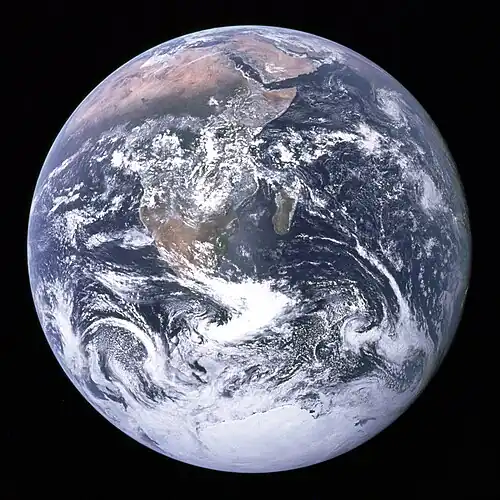
Earth has a dynamic atmosphere, which sustains Earth's surface conditions and protects it from most meteoroids and UV-light at entry. It has a composition of primarily nitrogen and oxygen. Water vapor is widely present in the atmosphere, forming clouds that cover most of the planet. The water vapor acts as a greenhouse gas and, together with other greenhouse gases in the atmosphere, particularly carbon dioxide (CO2), creates the conditions for both liquid surface water and water vapor to persist via the capturing of energy from the Sun's light. This process maintains the current average surface temperature of 14.76 °C, at which water is liquid under atmospheric pressure. Differences in the amount of captured energy between geographic regions (as with the equatorial region receiving more sunlight than the polar regions) drive atmospheric and ocean currents, producing a global climate system with different climate regions, and a range of weather phenomena such as precipitation, allowing components such as nitrogen to cycle. (Full article...)
Portal:Solar System/Selected article/6
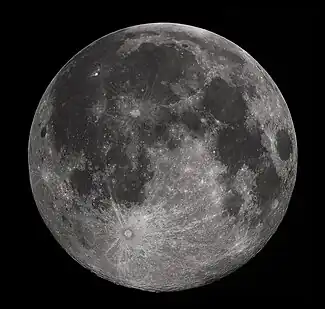
The Moon is in geophysical terms a planetary-mass object or satellite planet. It has a mass that amounts to 1.2% of Earth's, and a diameter that is roughly one-quarter of Earth's or with 3,474 km (2,159 mi) about as wide as Australia. Within the Solar System it is the most massive and largest satellite in relation to its parent planet, the fifth most massive and largest moon overall, and more massive and larger than all known dwarf planets. Its surface gravity is about one sixth of Earth's, about half of that of Mars, and after Jupiter's moon Io the second highest among all Solar System moons. The body of the Moon is differentiated and terrestrial, with no significant hydrosphere, atmosphere, or magnetic field. It formed 4.51 billion years ago, not long after Earth's formation, out of the debris from a giant impact between Earth and a hypothesized Mars-sized body called Theia. (Full article...)
Portal:Solar System/Selected article/7

Geologically, Mars is fairly active, with dust devils sweeping across the landscape and marsquakes (Martian analog to earthquakes) trembling underneath the ground. The surface of Mars hosts a large shield volcano (Olympus Mons) and one of the largest canyons in the Solar System (Valles Marineris). Mars's significant orbital eccentricity and axial tilt cause large seasonal changes to the polar ice caps' coverage and temperature swings between −110 °C (−166 °F) to 35 °C (95 °F) on the surface. A Martian solar day (sol) is equal to 24.5 hours and a Martian solar year is equal to 1.88 Earth years. (Full article...)
Portal:Solar System/Selected article/8
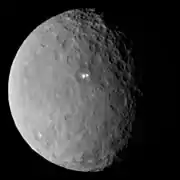
Ceres's small size means that even at its brightest, it is too dim to be seen by the naked eye, except under extremely dark skies. Its apparent magnitude ranges from 6.7 to 9.3, peaking at opposition (when it is closest to Earth) once every 15- to 16-month synodic period. As a result, its surface features are barely visible even with the most powerful telescopes, and little was known about it until the robotic NASA spacecraft Dawn approached Ceres for its orbital mission in 2015. (Full article...)
Portal:Solar System/Selected article/9

The cloud is thought to comprise two regions: a disc-shaped inner Oort cloud aligned with the solar ecliptic (also called its Hills cloud) and a spherical outer Oort cloud enclosing the entire solar system. Both regions lie well beyond the heliosphere and are in interstellar space. The Kuiper belt, the scattered disc and the detached objects—three other reservoirs of trans-Neptunian objects—are more than a thousand times closer to the Sun than the innermost portion of the Oort cloud (as shown in a logarithmic graphic within this article). (Full article...)
Portal:Solar System/Selected article/10

Jupiter was the first planet to form, and its inward migration during the primordial Solar System impacted much of the formation history of the other planets. Jupiter is primarily composed of hydrogen (90% by volume), followed by helium, which makes up a quarter of its mass and a tenth of its volume. The ongoing contraction of Jupiter's interior generates more heat than the planet receives from the Sun. Its internal structure is believed to comprise an outer mantle of liquid metallic hydrogen, and a diffuse inner core of denser material. Because of its rapid rotation rate of 1 rotation per 10 hours, Jupiter's shape is an oblate spheroid: it has a slight but noticeable bulge around the equator. The outer atmosphere is divided into a series of latitudinal bands, with turbulence and storms along their interacting boundaries. The most obvious result of this is the Great Red Spot, a giant storm which has been observed since 1831 and possibly earlier. (Full article...)
Portal:Solar System/Selected article/11

Uranus has the third-largest diameter and fourth-largest mass among the Solar System's planets. Based on current models, inside its volatile mantle layer is a rocky core, and surrounding it is a thick hydrogen and helium atmosphere. Trace amounts of hydrocarbons (thought to be produced via hydrolysis) and carbon monoxide along with carbon dioxide (thought to have been originated from comets) have been detected in the upper atmosphere. There are many unexplained climate phenomena in Uranus's atmosphere, such as its peak wind speed of 900 km/h (560 mph), variations in its polar cap and its erratic cloud formation. The planet also has very low internal heat compared to other giant planets, which is still unexplained. (Full article...)
Portal:Solar System/Selected article/12

The Jovian ring system is faint and consists mainly of dust. It has four main components: a thick inner torus of particles known as the "halo ring"; a relatively bright, exceptionally thin "main ring"; and two wide, thick and faint outer "gossamer rings", named for the moons of whose material they are composed: Amalthea and Thebe. (Full article...)
Portal:Solar System/Selected article/13

Portal:Solar System/Selected article/14

Portal:Solar System/Selected article/15

Portal:Solar System/Selected article/16
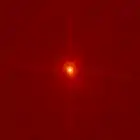
Portal:Solar System/Selected article/17

Portal:Solar System/Selected article/18
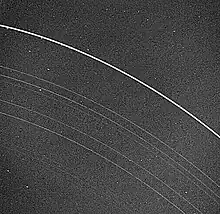
Portal:Solar System/Selected article/19

Portal:Solar System/Selected article/20

Portal:Solar System/Selected article/21

Portal:Solar System/Selected article/22

and the objects continue to be subject to perturbation by the planet Neptune. While the nearest distance to the Sun approached by scattered objects is about 30–35 AU, their orbits can extend well beyond 100 AU. This makes scattered objects "among the most distant and cold objects in the Solar System". The innermost portion of the scattered disc overlaps with a torus-shaped region of orbiting objects known as the Kuiper belt, but its outer limits reach much farther away from the Sun and farther above and below the ecliptic than the belt proper. Due to its unstable nature, astronomers now consider the scattered disc to be the place of origin for most periodic comets observed in the Solar System, with the centaurs, a population of icy bodies between Jupiter and Neptune, being the intermediate stage in an object's migration from the disc to the inner Solar System. (Full article...)
Portal:Solar System/Selected article/23
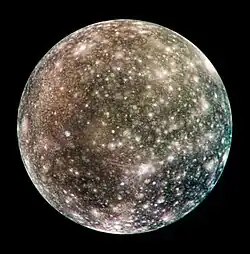
Portal:Solar System/Selected article/24
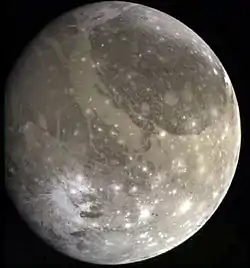
Portal:Solar System/Selected article/25
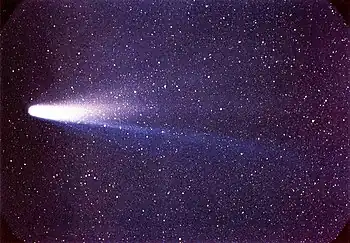
Portal:Solar System/Selected article/26
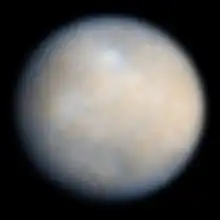
Portal:Solar System/Selected article/27
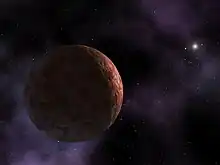
Portal:Solar System/Selected article/28
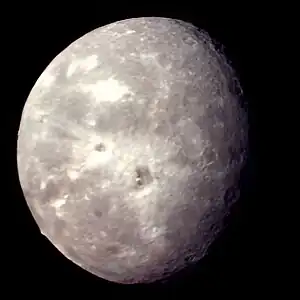
Portal:Solar System/Selected article/29
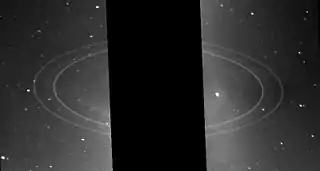
Portal:Solar System/Selected article/30
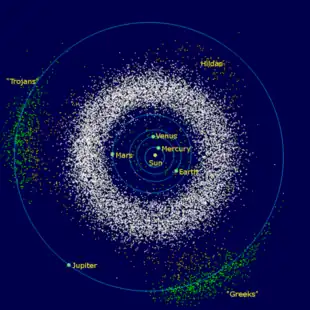
Nominations
Feel free to add featured, top or high importance articles about the Solar System to the above list. Other Solar System-related articles may be nominated here.